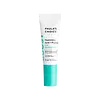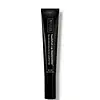What's inside
What's inside
 Key Ingredients
Key Ingredients

 Benefits
Benefits

 Concerns
Concerns

 Ingredients Side-by-side
Ingredients Side-by-side

Diisostearyl Malate
EmollientHydrogenated Castor Oil/Sebacic Acid Copolymer
EmollientTheobroma Cacao Seed Butter
EmollientDipentaerythrityl Tetrabehenate/Polyhydroxystearate
HumectantPolyamide-8
EmollientPolyglyceryl-3 Beeswax
EmulsifyingDimer Dilinoleyl Dimer Dilinoleate
EmollientEthylhexyl Palmitate
EmollientTriisostearin
Skin ConditioningSqualane
EmollientButyrospermum Parkii Butter Unsaponifiables
Skin ConditioningCetearyl Ethylhexanoate
EmollientDipalmitoyl Hydroxyproline
Skin ConditioningWater
Skin ConditioningArginine/Lysine Polypeptide
Skin ConditioningTocopherol
AntioxidantTribehenin
EmollientPalmitic Acid
EmollientHydroxystearic Acid
CleansingSorbitan Isostearate
EmulsifyingTrihydroxystearin
Skin ConditioningGlycine Soja Oil
EmollientPentaerythrityl Tetra-Di-T-Butyl Hydroxyhydrocinnamate
AntioxidantPortulaca Pilosa Extract
Skin ConditioningSodium Hyaluronate
HumectantLactic Acid
BufferingSucrose Cocoate
EmulsifyingPalmitoyl Tripeptide-1
Skin ConditioningPalmitoyl Tripeptide-38
Skin ConditioningGlucomannan
Skin ConditioningSorbic Acid
PreservativeDiisostearyl Malate, Hydrogenated Castor Oil/Sebacic Acid Copolymer, Theobroma Cacao Seed Butter, Dipentaerythrityl Tetrabehenate/Polyhydroxystearate, Polyamide-8, Polyglyceryl-3 Beeswax, Dimer Dilinoleyl Dimer Dilinoleate, Ethylhexyl Palmitate, Triisostearin, Squalane, Butyrospermum Parkii Butter Unsaponifiables, Cetearyl Ethylhexanoate, Dipalmitoyl Hydroxyproline, Water, Arginine/Lysine Polypeptide, Tocopherol, Tribehenin, Palmitic Acid, Hydroxystearic Acid, Sorbitan Isostearate, Trihydroxystearin, Glycine Soja Oil, Pentaerythrityl Tetra-Di-T-Butyl Hydroxyhydrocinnamate, Portulaca Pilosa Extract, Sodium Hyaluronate, Lactic Acid, Sucrose Cocoate, Palmitoyl Tripeptide-1, Palmitoyl Tripeptide-38, Glucomannan, Sorbic Acid
Hydrogenated Polyisobutene
EmollientJojoba Esters
EmollientPhenyl Trimethicone
Skin ConditioningTribehenin
EmollientHelianthus Annuus Seed Oil Unsaponifiables
EmollientEthylhexyl Palmitate
EmollientButyrospermum Parkii Butter
Skin ConditioningButyrospermum Parkii Butter Unsaponifiables
Skin ConditioningSodium Hyaluronate
HumectantSucrose Cocoate
EmulsifyingTetrahexyldecyl Ascorbate
AntioxidantTocopheryl Acetate
AntioxidantCamellia Sinensis Leaf Extract
AntimicrobialPalmitoyl Tripeptide-1
Skin ConditioningPalmitoyl Tripeptide-38
Skin ConditioningDipalmitoyl Hydroxyproline
Skin ConditioningPortulaca Pilosa Extract
Skin ConditioningCaprylic/Capric Triglyceride
MaskingButylene Glycol
HumectantCetearyl Ethylhexanoate
EmollientSorbitan Isostearate
EmulsifyingSilica Dimethyl Silylate
EmollientGlyceryl Caprylate
EmollientMentha Arvensis Leaf Oil
MaskingHydrogenated Polyisobutene, Jojoba Esters, Phenyl Trimethicone, Tribehenin, Helianthus Annuus Seed Oil Unsaponifiables, Ethylhexyl Palmitate, Butyrospermum Parkii Butter, Butyrospermum Parkii Butter Unsaponifiables, Sodium Hyaluronate, Sucrose Cocoate, Tetrahexyldecyl Ascorbate, Tocopheryl Acetate, Camellia Sinensis Leaf Extract, Palmitoyl Tripeptide-1, Palmitoyl Tripeptide-38, Dipalmitoyl Hydroxyproline, Portulaca Pilosa Extract, Caprylic/Capric Triglyceride, Butylene Glycol, Cetearyl Ethylhexanoate, Sorbitan Isostearate, Silica Dimethyl Silylate, Glyceryl Caprylate, Mentha Arvensis Leaf Oil
Ingredients Explained
These ingredients are found in both products.
Ingredients higher up in an ingredient list are typically present in a larger amount.
Butyrospermum Parkii Butter Unsaponifiables comes from shea butter.
Unsaponifiables means the butter is not saponified, or it has not been turned into soap using an alkali reaction.
This ingredient contains Vitamin E, sterols, and many antioxidants. These compounds help hydate your skin.
Learn more about Butyrospermum Parkii Butter UnsaponifiablesCetearyl Ethylhexanoate is derived from cetearyl alcohol and sorbic acid.
It is an emollient and helps hydrate the skin. Emollients form a barrier on the skin to prevent water from escaping.
Dipalmitoyl Hydroxyproline isn't fungal acne safe.
Ethylhexyl Palmitate, also known as octyl palmitate, is created from 2-ethylhexyl alcohol and palmitic acid. It is a fatty acid ester.
The fatty acid content of Ethylhexyl Palmitate makes it an emollient. Emollients help soften and hydrate your skin by trapping moisture within.
Ethylhexyl Palmitate is also used to help improve the texture of cosmetics. It helps other ingredient dissolve in products and help disperse ingredients more evenly.
You'll likely find this ingredient in sunscreen, as it is often used to mix UV-blocking ingredients such as avobenzone and ethylhexyl triazone.
It can also help stabilize the fragrances in a product as a fragrance fixative.
Ethylhexyl Palmitate can be used to substitute mineral oil.
Due to its high fatty acid content, it may not be fungal-acne safe.
Learn more about Ethylhexyl PalmitatePalmitoyl Tripeptide-1 is also known as pal-GHK. It is made up of 3 amino acids and palmitic acid, a fatty acid that helps it absorb into skin more easily.
This peptide is as a signal peptide, meaning it tells the skin to produce more collagen. Collagen is the key protein that helps form the skin's structure and keep it plump, firm, and hydrated.
By boosting collagen production, this ingredient supports a stronger skin barrier and helps reduce the appearance of wrinkles.
You'll most likely see this ingredient paired with Palmitoyl Tetrapeptide-7 in the well-known Matrixyl 3000 complex. While results from in-house testing should be viewed cautiously, this peptide duo is among the most studied and widely used in modern skincare.
Due to its palmitic acid base, this ingredient may not be safe for Malassezia folliculitis.
Read more about other common types of peptides here:
Learn more about Palmitoyl Tripeptide-1This synthetic, signal peptide has unique skin conditioning properties in that is a matrikine-mimetic compound.
First of all, Palmitoyl Tripeptide-38 is a signal peptide; signal peptides tell the body to create more collagen.
What is a matrikine-mimetic compound?
This peptide has the ability to mimic matrikines in skin. Our skin created matrikines by breaking down matrix proteins into peptides.
Matrikines play a role in:
Though further research is needed, this ingredient seems pretty promising. In one study, women over the age of 40 with visible photoaging used a vitamin C serum with this ingredient for 56 days (15% ascorbid acid, 5 ppm palmitoyl tripeptide‐38). The results found improvement in skin roughness and skin tone.
This peptide is also part of the famous Matrixyl synthe’6, a blend of ingredients that also includes glycerin, water, and hydroxypropyl cyclodextrin.
Learn more about Palmitoyl Tripeptide-38We don't have a description for Portulaca Pilosa Extract yet.
Sodium Hyaluronate is hyaluronic acid's salt form. It is commonly derived from the sodium salt of hyaluronic acid.
Like hyaluronic acid, it is great at holding water and acts as a humectant. This makes it a great skin hydrating ingredient.
Sodium Hyaluronate is naturally occurring in our bodies and is mostly found in eye fluid and joints.
These are some other common types of Hyaluronic Acid:
Learn more about Sodium HyaluronateSorbitan Isostearate is an emulsifer and cleaning agent. It is created from isostearic acid and sorbitol.
As an emulsifier, Sorbitan Isostearate prevents oils and water from separating.
Due to its isostearic acid base, it may not be safe for Malassezia or fungal acne.
Learn more about Sorbitan IsostearateSucrose Cocoate is created from the sucrose esters of coconut acid. Coconut acid is comprised of the fatty acids of coconut oil.
It is an emulsifier and skin conditioner.
This ingredient may not be fungal acne safe.
Learn more about Sucrose CocoateTribehenin comes from glycerin and behenic acid.
It is used as an emollient, or moisturizer. Emollients form a thin barrier on skin to prevent moisture from escaping.
This ingredient may not be Malassezia folliculitis, or fungal-acne safe.
Learn more about Tribehenin